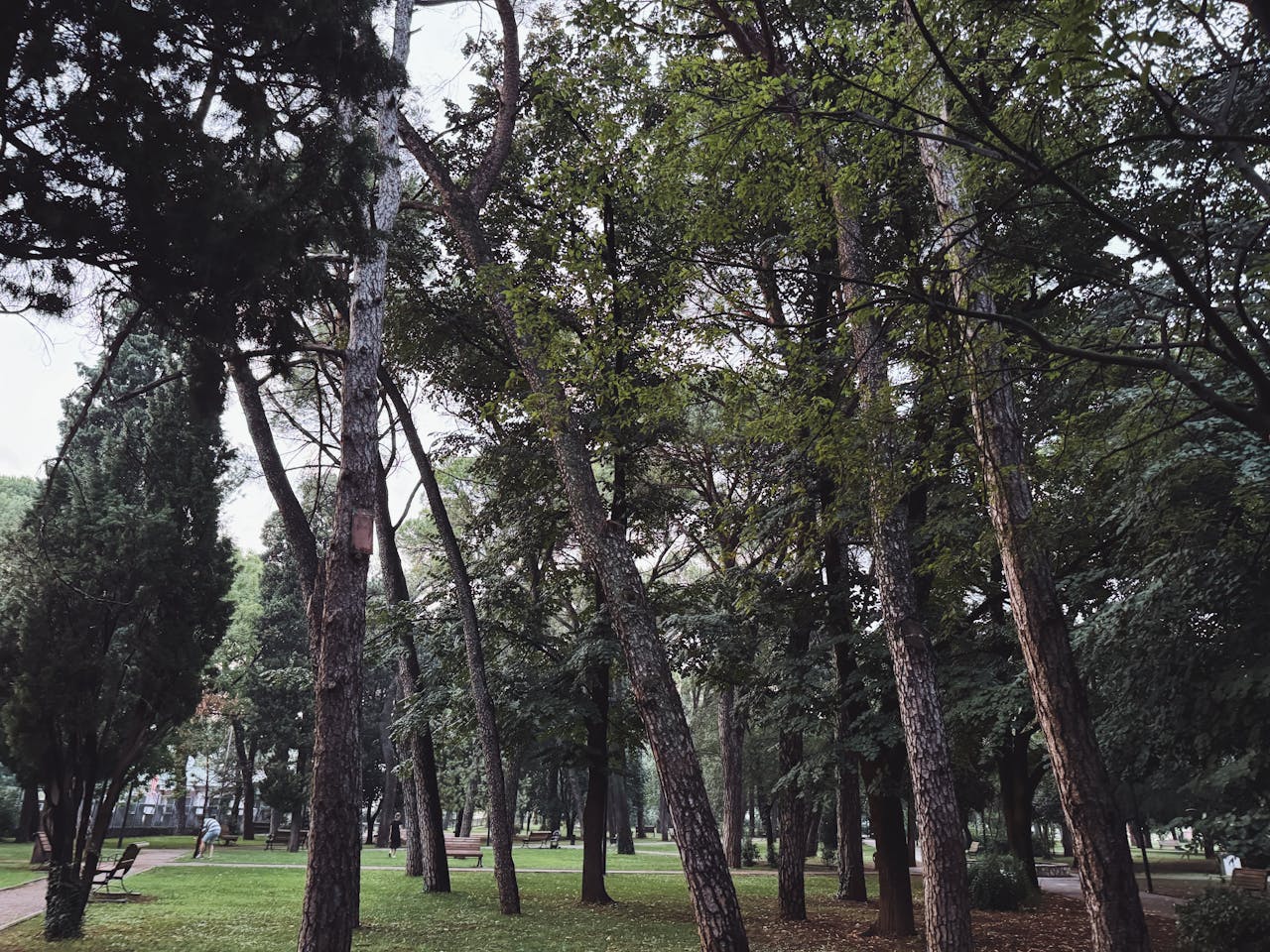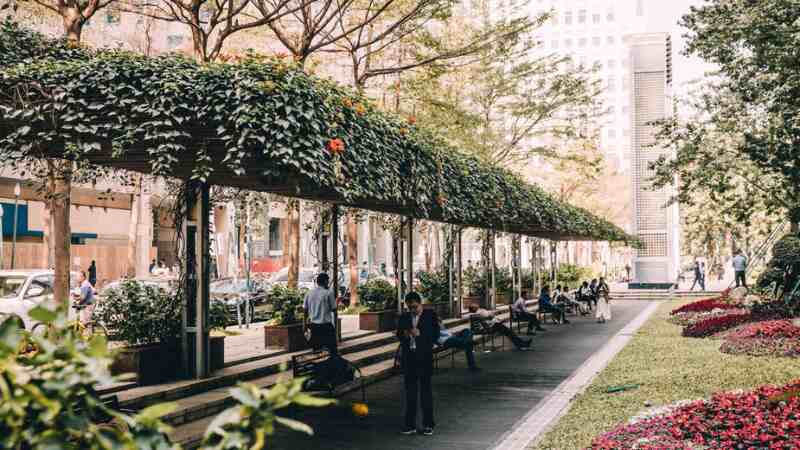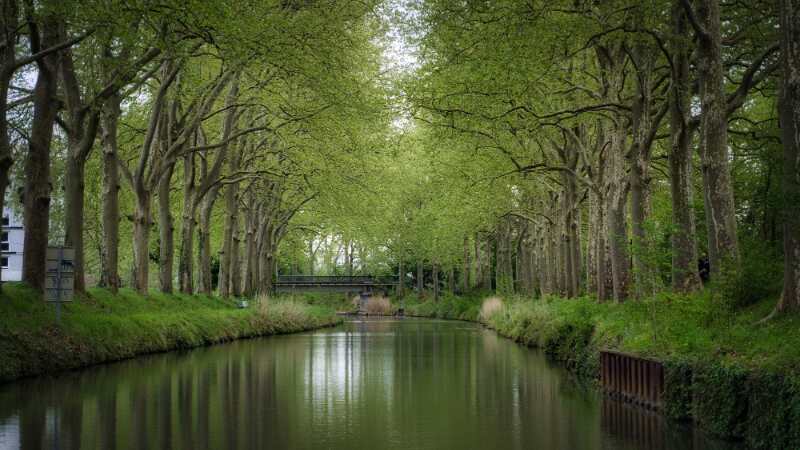Introduction to the Role of Greenery

Greenery contributes to environmental health by absorbing carbon dioxide and releasing oxygen, thereby mitigating climate change. Urban green spaces, such as parks and gardens, help reduce heat islands, improve air quality, and increase biodiversity. Plants also provide essential habitats for wildlife, promoting ecosystem balance.
Additionally, greenery can improve mental well-being and promote social interaction between communities. By integrating more plants into our environment, we can create a sustainable future that benefits both people and the planet.
Climate change is one of the most pressing challenges of our time. Rising global temperatures, unpredictable weather patterns, and ecosystem degradation are clear signs that the Earth’s climate is undergoing significant and potentially irreversible changes.
While human activities such as deforestation and industrialization have contributed to accelerating climate change, there is growing recognition of the power of Greenery—trees, plants, and green spaces—in mitigating its effects. In this article, we’ll explore how greening can play an important role in combating climate change, from carbon sequestration to cooling urban environments and enhancing biodiversity.
The role of greenery in carbon sequestration
Central to climate change is the increasing concentration of greenhouse gases (GHGs) in the atmosphere, primarily carbon dioxide (CO2). One of the most important ways that greening helps combat climate change is through carbon sequestration. Carbon sequestration is the process by which trees and plants absorb CO2 from the atmosphere and store it. This process occurs through photosynthesis, where plants use sunlight to convert CO2 into oxygen and glucose.

Forests, especially large and diverse forests such as the Amazon rainforest, are often called the “lungs of the Earth” because of their ability to absorb large amounts of CO2. Research shows that a mature tree can absorb 48 pounds of carbon dioxide annually, and over its lifetime, it can store about a ton of CO2. Therefore, forests act as natural carbon sinks, which are essential for reducing the overall concentration of greenhouse gases in the atmosphere.
Urban and suburban green spaces, such as parks and gardens, also contribute to carbon sequestration, although on a smaller scale than forests. By planting more trees and promoting urban forestry, cities can play an important role in sequestering CO2, contributing to global efforts to reduce greenhouse gases.
A cooling urban environment: the urban heat island effect
Another important way that greening can combat climate change is by addressing the urban heat island effect. Cities are said to be significantly warmer than their surrounding countryside due to the heat-absorbing properties of concrete, asphalt, and other man-made materials. This phenomenon, known as the urban heat island effect, is exacerbated by climate change, as rising temperatures make urban areas even hotter.
Greenery in cities, such as trees, shrubs, and green roofs, can help cool the urban environment by providing shade and reducing surface temperatures. Trees provide direct cooling through evapotranspiration, a process where water is absorbed by the roots, moved through the plant, and evaporates from the leaves to cool the surrounding air. Studies show that neighborhoods with more tree cover can be several degrees cooler than those without.
Additionally, green roofs – roofs covered with vegetation – can significantly reduce the temperature of buildings by absorbing less heat than traditional roofing materials. By reducing the need for air conditioning, urban areas can help reduce green energy consumption and reduce carbon emissions from electricity generation, which is often powered by fossil fuels.
Enhancing biodiversity and ecosystem services
Biodiversity plays an important role in maintaining healthy ecosystems that are resilient to climate change. from forests and wetlands to grasslands and gardens—supports biodiversity by providing habitat for a variety of plants, animals, insects, and microorganisms. This biodiversity contributes to the overall stability of ecosystems, which is essential to combat climate change.

Healthy ecosystems provide valuable services that help mitigate climate change. For example, wetlands act as natural water filters and flood regulators, absorbing excess rainwater and reducing the risk of flooding in nearby areas. Mangroves, which grow in coastal areas, protect coastlines from erosion and storm surge while also sequestering large amounts of carbon.
Green spaces provide habitat for different species, promoting biodiversity. Healthy ecosystems with diverse plant and animal life are more resilient to climate change impacts, such as extreme weather events and changes in temperature. Preserving and expanding grasslands can help maintain ecological balance, ensuring the survival of both flora and fauna.
Forests provide clean air, prevent soil erosion, and maintain the water cycle, all of which are vital to a stable climate. By planting more greenery and preserving natural ecosystems, we can support biodiversity and the essential ecosystem services it provides, making our environment more resilient to the effects of climate change.
Forestry and Plantation: A Global Movement
Deforestation (replanting trees in deforested areas) and afforestation (planting trees in areas where there were none before) are two important strategies for using green to combat climate change. Globally, many countries and organizations are recognizing the importance of reforestation and plantations in reducing carbon emissions.

A notable initiative is the Bonn Challenge, which aims to restore 350 million hectares of deforestation and degraded land by 2030. Such large-scale efforts have the potential to sequester hundreds of gigatons of CO2 from the atmosphere, significantly reducing the effects of climate change.
Apart from international initiatives, local communities also play their part in deforestation. Many grassroots organizations are working to plant trees in urban and rural areas, often collaborating with governments and businesses. These efforts not only contribute to carbon sequestration but also help restore ecosystems, improve air quality, and create jobs for local communities.
The role of greening in sustainable agriculture
Sustainable agricultural practices are another important component of combating climate change, and greening plays a key role in this effort. Agricultural practices that incorporate more trees and plants, such as agroforestry, can increase carbon sequestration while improving soil health and water retention. Agroforestry involves integrating trees into fields, where they provide shade, reduce erosion, and enhance biodiversity.

Cover cropping, which involves planting clover, beans, or grass crops between crops, is another sustainable practice that uses greenery to improve soil quality and sequester carbon. These crops act as natural mulch, reducing the need for chemical fertilizers and pesticides, which contribute to greenhouse gas emissions.
Additionally, vertical farming, a modern form of urban agriculture, allows crops to be grown in multiple layers, often within a climate-controlled environment. By using less land and water, vertical farming can help reduce the environmental impact of agriculture, making food production more sustainable and resilient to climate change.
The role of green spaces in reducing carbon footprints
Green spaces, whether urban, suburban, or rural, have a direct impact on reducing carbon footprints. For individuals and communities, creating and maintaining green spaces is a tangible way to contribute to the fight against climate change. For example, community gardens and urban farming projects allow residents to grow their own food, reducing the carbon emissions associated with moving food from farms to cities.
In cities, increasing green spaces such as parks, rooftop gardens, and urban forests can also promote more sustainable lifestyles. Green spaces encourage walking, cycling and outdoor activities, reduce dependence on cars and reduce transport-related carbon emissions. By fostering a connection to nature, green spaces can promote a sense of environmental responsibility and encourage individuals to adopt more sustainable behaviors.
Understanding Greenery
Greenery refers to the presence of plants, trees, and green spaces in both urban and rural environments. It includes everything from sprawling forests and grasslands to city parks and rooftop gardens. The importance of greenery goes beyond aesthetics; It plays an important role in regulating the Earth’s climate and supporting biodiversity.
Greenery includes all forms of plant life and green spaces, from vast natural landscapes to small urban parks. It plays an important role in maintaining ecological balance, supporting biodiversity, and regulating temperature. In urban areas, greenery helps combat pollution and provides space for residents to connect with nature. Its importance goes beyond mere aesthetics, affecting climate stability and the overall well-being of communities.
Temperature regulation
Greenery plays an important role in moderating the temperature. Trees and plants help cool the air through shade and evapotranspiration, which can reduce the need for air conditioning and reduce energy consumption. Studies show that strategic greening can reduce surface temperatures by several degrees, contributing to a more comfortable urban environment.

The cooling effect of trees and vegetation is particularly important in urban areas where the heat island effect can lead to dangerously high temperatures. Properly maintained green spaces and tree canopy can help reduce the temperature of the surrounding building, reducing stress on the power grid during heat waves. This natural cooling also helps improve air quality by filtering pollutants and providing a more livable urban climate.
Improvement in public health
The presence of greenery in urban areas is associated with numerous health benefits. Access to parks and green spaces encourages physical activity, reducing obesity rates and health problems. Additionally, studies show that spending time in nature can reduce stress, anxiety, and depression, improving mental well-being. In times of climate-induced stress, greenery provides an important respite, increasing community resilience.

Access to green spaces has been linked not only to physical health benefits, but also to cognitive and emotional improvements, such as increased focus and productivity. These spaces encourage social interaction and provide communities with places to relax, both of which are important for reducing feelings of isolation. Additionally, greenery in cities acts as a buffer against air pollution, which can significantly reduce respiratory and cardiovascular diseases in urban populations.
Social cohesion.
Green spaces promote social interaction and community engagement. They serve as community spaces where people of all ages can come together, fostering a sense of belonging and collaboration. Communities with abundant green space have lower crime rates and higher levels of social capital, which can enhance collective action against climate change.

Green spaces act as communal hubs where people of different ages and backgrounds can come together, promoting social interaction and cooperation. These areas provide common space for recreation, relaxation and social events, fostering a sense of belonging. Studies show that communities with ample green space experience lower crime rates and stronger social ties. This increased social cohesion is vital to collective efforts to tackle broader issues such as climate change
Educational opportunities
Greenery also serves as a powerful educational tool. Urban gardens, community farms, and nature trails provide learning experiences about ecology, sustainability, and food production. Educating the public about the importance of greening can motivate individuals to take action, whether by planting trees, advocating for green policies, or participating in community cleanup efforts.

Green spaces serve as living classrooms, offering learning about ecosystems and sustainability practices that traditional classrooms cannot replicate. Education programs centered around greenery can foster a deeper connection between students and nature, which can lead to interest in environmental studies and careers. These spaces also serve as platforms for public workshops, helping communities learn how to implement sustainable practices in their homes and neighborhoods.
Rising property prices
The presence of greenery can significantly increase property values. Homes near parks or with scenic views sell for higher prices than homes without such amenities. This increase in property values can increase tax revenue for local governments, which can be reinvested in more green initiatives.
Demand for homes near green areas often leads to increased demand, which can have a ripple effect in surrounding neighborhoods. However, this increase in property prices can lead to gentrification, where low-income families can be pushed out of these more desirable areas. On the positive side, additional revenue from property taxes provides municipalities with a valuable resource to reinvest in community services and further urban greening efforts.
Job creation
Investing in greenery can also create employment opportunities. Urban forestry programs, landscape maintenance, and the establishment of parks and green spaces require skilled labor. Additionally, the growth of the green economy—industries focused on sustainability—creates more job opportunities, from landscape architects to environmental scientists. Green projects don’t just provide short-term employment;
They open avenues for long-term career development in sustainable industries. From conservation programs to renewable energy-powered landscaping practices, these sectors are becoming critical components of the broader economy. Additionally, training initiatives in green industries can help the unemployed population acquire new skills and access stable employment in fast-growing sectors.
Climate resilience
Greening contributes to overall community resilience to climate change. By improving air quality, enhancing water management, and reducing heat, green spaces can help communities better withstand the effects of climate change. This resilience can lead to lower recovery costs after climate-related disasters, ultimately saving money in the long run. Green spaces are an important part of urban climate resilience, helping to mitigate the effects of extreme weather.

By enhancing water management and reducing temperatures through natural shading, green areas reduce the risks of flooding and heat-related diseases. In the long run, these spaces can reduce recovery costs after climate-related disasters, making them a smart investment for cities. As the impacts of climate change intensify, resilient green spaces become essential to protect communities.
Community engagement: Community gardens, tree planting events, and educational programs can empower residents to play an active role in their environment. This grassroots involvement not only enhances greening but also strengthens community ties. Community involvement in environmental efforts is more than just planting trees or creating gardens
It fosters a sense of responsibility and belonging among residents, giving them a direct hand in improving their surroundings. These grassroots efforts also serve as educational opportunities, empowering people to make green choices in their daily lives. Ultimately, this active participation strengthens not only the environment but also the relationships between neighbors, creating a more cohesive and environmentally conscious community.
Policy Advocacy
We are advocating for policies that support greening. This includes promoting zoning laws that protect green spaces, funding for urban forestry initiatives, and incentives for green infrastructure projects. Policymakers should recognize the long-term benefits of greening and allocate resources accordingly. Advocacy for environmental policies ensures that green initiatives are supported at the legislative level
Zoning laws, urban forestry funding, and green infrastructure incentives are critical to long-term sustainability. Policymakers need to understand that investing in green spaces is not just about aesthetics, but about long-term health, economic, and environmental benefits. With the right policies, communities can thrive with cleaner air, better stormwater management, and more green job
Research and innovation
Investing in research on the benefits and best practices of greening can lead to more effective strategies. Innovative approaches, such as vertical gardens and urban agriculture, can maximize space while contributing to sustainability. Collaborations between universities, government agencies, and nonprofits can facilitate the sharing of knowledge and resources.
Continued research in greening allows for data-driven solutions that can enhance the sustainability and functionality of urban green spaces. Innovations like green roofs and smart irrigation systems not only improve space but also reduce resource use, making cities more resilient to climate change. By fostering interdisciplinary collaboration, stakeholders can share progress, leading to the widespread implementation of new techniques that benefit both the environment and society.
Land use disputes
In densely populated urban areas, competition for land can hinder the establishment of new green spaces. Balancing development needs with the need for greenery requires careful planning and community input. In cities, competition for land is fierce, with developers often pushing for more housing and commercial space at the expense of green areas.
Finding a balance between development and environmental protection is essential for sustainable urban development. Public input and careful planning can help ensure that greening is maintained without hindering necessary developments. Well-maintained parks and green zones can actually increase property values and enhance livability in dense areas.
Funding Restrictions
Limited funding may limit the ability to maintain existing green spaces or develop new ones. Local governments often prioritize infrastructure over green projects, despite the long-term benefits that greening can provide. Many greening projects are hampered by limited funding, as cities often prioritize infrastructure over environmental needs.
The long-term benefits of green spaces, such as better health and lower energy costs, are sometimes overlooked in favor of short-term budget concerns. Communities can find creative funding solutions, such as grants, partnerships, or public fundraising, to overcome these financial barriers. Proper investment in green spaces can yield significant economic, social, and environmental returns over time.
Conclusion:
As individuals, communities, and nations work together to reduce carbon emissions and restore ecosystems, planting more trees and protecting green spaces will be essential steps to creating a more sustainable and resilient future.
The way forward is clear: we must embrace greenness in all its forms, whether through forests, urban greening, or sustainable agriculture, to reduce the effects of climate change and preserve the health of our planet for future generations.
The role of greening in combating climate change is profound and multifaceted. From carbon sequestration and increasing biodiversity to improving public health and economic benefits, greening offers a natural solution to many of the challenges posed by climate change. As we examine the complexities of our changing world, prioritizing greenery in our urban and rural landscapes can pave the way for a more sustainable future.
Investing in greening is not just an environmental issue. It is a social, economic, and health imperative. By fostering a culture of appreciation and responsibility for our green spaces, we can harness their full potential to combat climate change and build vibrant, resilient communities for generations to come. Let us embrace greenness as an important ally in the fight against climate change and work together to cultivate a greener, healthier planet.


